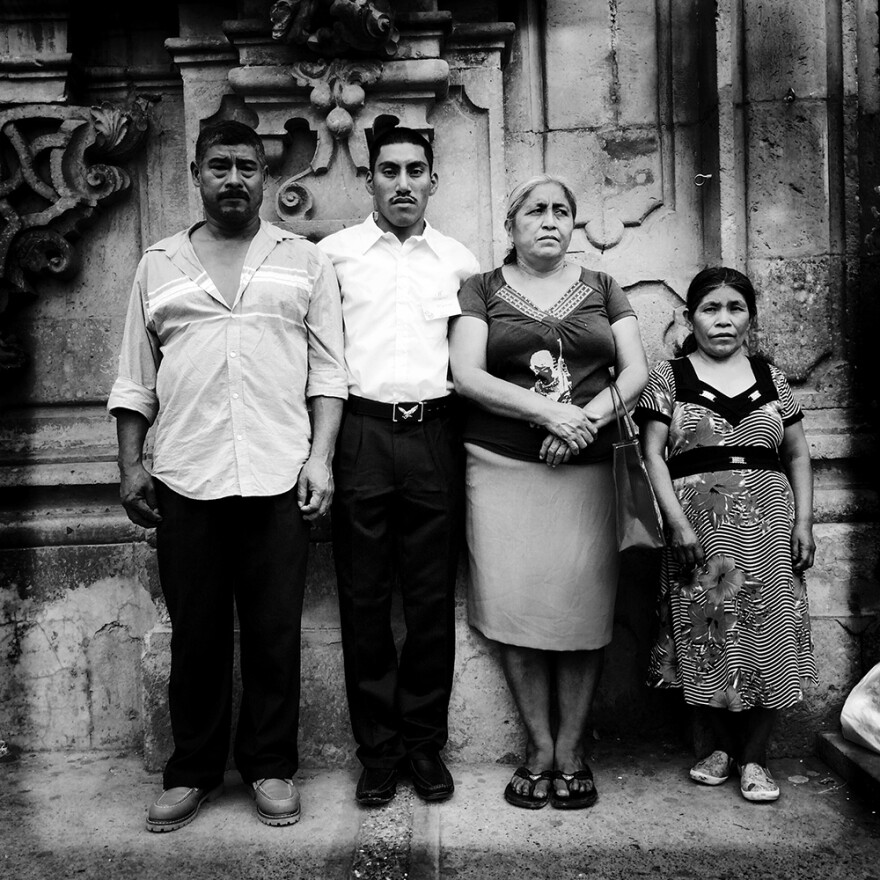People use Instagram to share all kinds of images online — taking selfies and posting photos of brunch, of course, but also discovering raw talent or telling stories that might not otherwise get attention.
That's exactly what many photojournalists use Instagram for: posting photos to draw attention to issues they're passionate about. And visual media giants like Getty Images have taken notice.
This past week, Getty Images awarded a $10,000 grant to three photographers — Ismail Ferdous of Bangladesh, Adriana Zehbrauskas of Brazil and Dmitry Markov of Russia — for using Instagram to highlight stories from underrepresented communities around the world. The award, called the Getty Images Instagram Grant, is the first of its kind, and was created to recognize emerging talent on new digital platforms. The winners intend to use their grants to continue their work in photojournalism.
There were 1,200 entrants from 109 countries. A panel of documentary photographers judged the quality of their images, photographic technique, and most important, their storytelling ability within the small-screen constraints of Instagram's platform, which Ismail Ferdous calls the "modern-day Polaroid camera."
Adriana Zehbrauskas focused on the families of the 43 college students who went missing from the Ayotzinapa Rural Teachers School last fall in Mexico and were declared dead early this year, murdered by a drug gang. Dmitry Markov showcased snapshots of the orphaned children in Pskov, Russia, where he lives. And Ismail Ferdous took portraits of relatives of workers who died in the 2013 collapse of the Rana Plaza garment factory in Bangladesh.
We asked each photographer about their winning images.
Adriana Zehbrauskas, a Brazilian-born photographer currently residing in Mexico City, has covered issues related to the Mexican drug war, migration and religion and is a regular contributor to The New York Times.
How has Instagram changed the way you take your photos?
"In the beginning, Instagram was a place for more personal photos, a bit of an extension of the new regained freedom I found shooting with my phone. Naturally it evolved to a place where I could post images from stories I was working on and that wouldn't necessarily find a space in print."


Dmitry Markov is from Pskov, a town about 12 miles from the Estonian border, where he works with disabled children and volunteers for organizations providing support services to orphans. Markov describes his own childhood as "directionless" until he discovered his passion for journalism at age 16.
Tell us something surprising about your winning photos.
"I like taking pictures of kids in their late teens, since it's the hardest thing to do. Teenagers are socially more closed. To take a picture of teenagers, you have to establish some contact and build trust. I like photographing people with animals — when a cat or a dog appears next to a person, they behave differently; they become more natural."



Ismail Ferdous is an award-winning photojournalist from Dhaka, Bangladesh. Aside from his work on the 2013 Rana Plaza garment factory collapse, he has documented the effects of climate change, HIV/AIDS and violence against women in Guatemala.
What was the most challenging thing about taking these photos?
"It's not an easy process approaching the people I'm photographing. I treat them gently because I feel most of them are still very fragile with their traumas. The majority of them appreciated me. They never would have thought someone would come to their door after two years to hear their stories."


Explore the #GettyImagesInstagramGrant Instagram feed to see submissions and nominations to the grant around the world. Share your favorites with us on Twitter at @NPRGlobalHealth or in a comment below.
Copyright 2021 NPR. To see more, visit https://www.npr.org.



